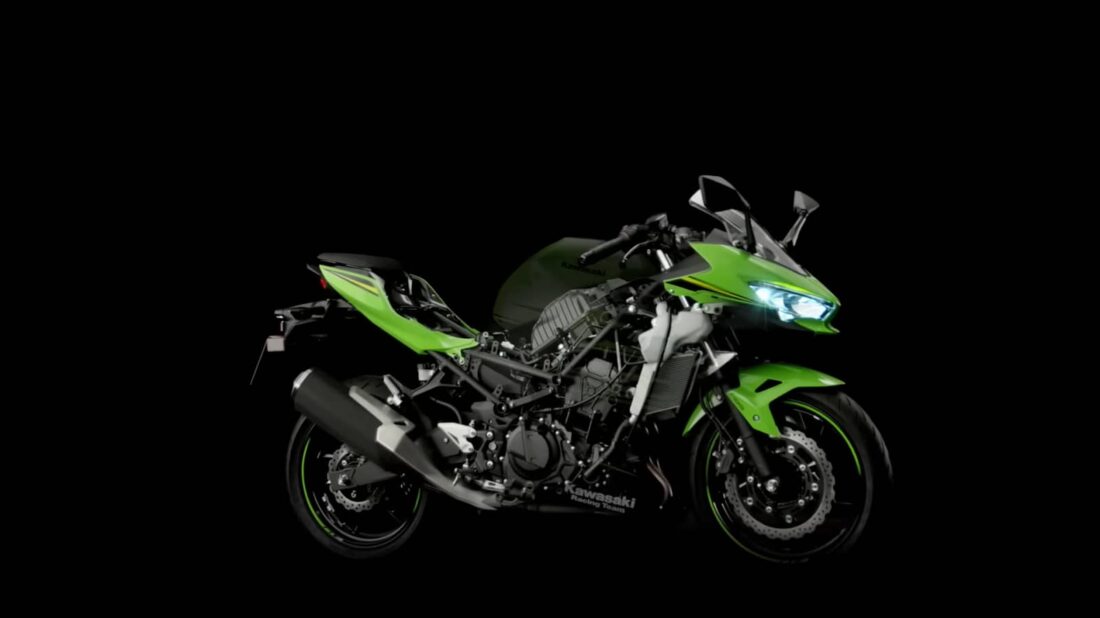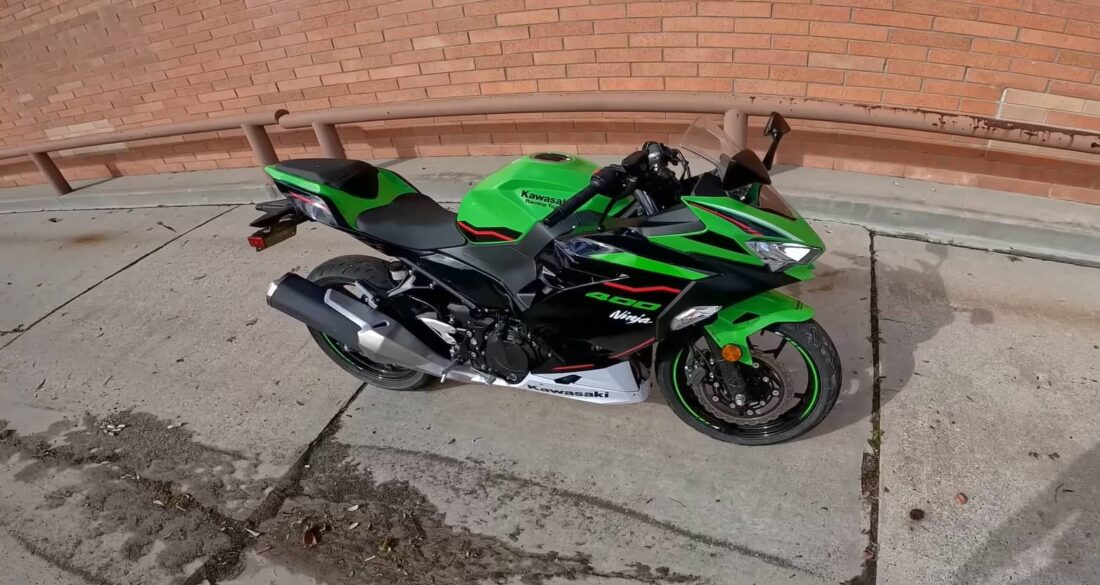A Close Look at the Ninja 400 Top Speed

Analysis of Kawasaki Ninja 400 and Yamaha YZF-R3
The arena of entry-level sportsbikes is marked by intense competition, featuring a wide array of motorcycles that vary in engine size, configuration, and pricing.
Two standout models that are at the forefront of this category are the Kawasaki Ninja 400 and the Yamaha YZF-R3.
- Both bikes feature similar sub-400 cc parallel twin engines, offering lightweight frames coupled with sporty aesthetics that echo the designs of their higher-capacity counterparts;
- Individuals exploring this segment may be interested in understanding the performance nuances of these models, particularly in terms of acceleration and top speed metrics such as the 0-60 mph (0-100 km/h) figures;
- Prior analyses have separately examined the acceleration and top speed capabilities of both the Ninja 400 and the YZF-R3, offering insights that can be accessed for a detailed review. These results provide a basis for comparison, including against models like the YZF-R7.
This discussion aims to delve into a comparative performance review between the Kawasaki Ninja 400 and the Yamaha YZF-R3, focusing on their acceleration and top speed benchmarks.
If you’re intrigued by the Ninja 400’s capabilities, you may also like to delve into the top speed accomplishments of the MT-07.
Dyno Showdown: Ninja 400 vs YZF-R3 Performance
The Kawasaki Ninja 400, with its 399 cc parallel twin engine, boasts a significant 78 cc advantage over the Yamaha YZF-R3, a difference that’s clearly demonstrated in dyno tests. This graph comparison reveals the Kawasaki’s output of 44 horsepower and 26 ft/lb of torque at the rear wheel, closely aligning with the manufacturer’s claim of 49 horsepower and 28 ft/lb of torque. This minor variance reflects the typical 10-12% loss due to transmission from crank to wheel.
The Yamaha YZF-R3, with its 321 cc engine, delivers 37 horsepower and 20 ft/lb of torque at the rear wheel, against a claimed 41 horsepower and 22 ft/lb of torque. While both motorcycles offer smooth power delivery, the Ninja 400’s graph shows slight fluctuations that aren’t noticeable during actual riding.
Comparatively, the Ninja 400 demonstrates superior torque at just 3500 rpm, matching the peak torque of the YZF-R3, showcasing the Kawasaki’s larger displacement benefits. Despite Yamaha’s commendable power for its size, particularly against the preceding Ninja 300, it can’t bridge the gap to the Ninja 400’s performance.
In terms of engine response, the YZF-R3 is agile, maintaining its prowess across a broad range of power and torque. For optimal performance, especially against faster bikes, it’s advisable to maintain engine speeds above 7000 rpm. On the other hand, the Ninja 400’s engine performance mirrors that of larger bikes, offering a substantial feel at lower revs, with its prime performance band starting at about 6000 rpm.
Both the Ninja 400 and YZF-R3 are designed for enthusiastic riding, rewarding those who actively engage their gearboxes. Nonetheless, the Ninja 400’s additional capacity grants it a noticeable edge in engine performance, making it a formidable contender in its class.
Ninja 400 vs YZF-R3: Gear-Based Acceleration Analysis
In terms of engine capacity, the Kawasaki Ninja 400 holds a significant edge with its 78cc advantage over the YZF-R3.
But how does this translate when considering the performance through the gears?
The Ninja 400’s dominance on the dyno is evident, with superior power and torque across the RPM range, reflecting on-road performance as well. Despite the YZF-R3 opting for lower gearing to bridge the gap, its slightly heavier build lessens the impact of this choice.
- A comparison of first gear highlights the Ninja 400’s substantial advantage, offering superior acceleration across the entire speed range and reaching higher top speeds;
- Moving to second gear, the Ninja 400’s advantage diminishes, with acceleration being comparable, albeit with a slight edge for the Ninja between specific speed ranges. Surprisingly, the YZF-R3 matches the Ninja 400’s thrust/acceleration in first gear, despite its lower power and torque;
- In third gear, the Ninja 400’s superiority reasserts itself, although the YZF-R3 remains relatively competitive.
However, from fourth gear onwards, the Ninja 400 consistently outperforms the YZF-R3, showcasing its superior engine performance and acceleration across all gears.
Gear Dynamics: Ninja 400 vs YZF-R3 Showdown

When it comes to the Yamaha YZF-R3’s performance in second gear, it highlights the potential of lower gearing to compensate for lower power and torque. However, this choice can impact the top speed achievable in that gear, especially when compared to competitors with longer gearing, unless the motorcycle with lower gearing revs significantly higher, which isn’t the case with the Yamaha YZF-R3.
Motorcycles with higher rev limits can often afford to run lower gearing compared to similar-powered counterparts with lower rev limits. However, in the higher gears, such as fourth, fifth, and sixth, the Kawasaki Ninja 400 asserts its dominance across all speed ranges.
- For instance, cruising at 70 mph (113 km/h) in sixth gear, the Kawasaki Ninja 400 operates at around 6600 rpm, whereas the Yamaha YZF-R3, with its lower gearing, revs higher at approximately 7200 rpm;
- Even with the Yamaha YZF-R3’s lower gearing, attempting a swift overtake would favor the Kawasaki Ninja 400. To match the Ninja’s acceleration in sixth gear, the YZF-R3 would need to downshift to fifth, pushing the revs up to 8100 rpm;
- Analyzing the thrust curve reveals that in fifth gear, the Yamaha YZF-R3 roughly matches the Ninja 400’s acceleration in sixth gear, but the Ninja pulls ahead again around 130 km/h;
- On the road, the Yamaha YZF-R3 often needs to drop a gear lower than the Kawasaki Ninja 400 to keep up, making gearbox management essential for YZF-R3 riders when cruising alongside Ninja 400 owners.
Ninja 400 vs YZF-R3: Acceleration Dynamics
In comprehensive evaluation of these motorcycles, the Kawasaki Ninja 400 and Yamaha YZF-R3 have demonstrated closely matched performances, with some nuanced differences noticeable during tests.
The Kawasaki Ninja 400 consistently outpaces the Yamaha YZF-R3 in acceleration tests, a result that aligns with expectations considering its superior dynamometer results, lighter frame, and enhanced efficiency in direct acceleration scenarios from a stationary position. Achieving optimal acceleration requires a decisive engagement with the clutch, steering clear of gradual engagement techniques.
During the tests, the Ninja 400 recorded an impressive acceleration from 0 to 60 mph in just 4.07 seconds, marking a slight improvement over its previous record. For international metrics, it achieved 0 to 100 km/h in 4.35 seconds, catering to audiences in Australia, Europe, and Canada. On the other hand, the YZF-R3 trailed with a 0 to 60 mph time of 5.17 seconds and a 0 to 100 km/h time of 5.45 seconds. The necessity for an additional gear shift to reach 60 mph or 100 km/h notably impacts the YZF-R3’s performance, highlighting the importance of swift gear changes without clutch engagement.
Beyond 60 mph, the Ninja 400 widens its lead, reaching 100 mph in 12.58 seconds—a slight deceleration from previous tests. Conversely, the YZF-R3 shows a slight improvement, reaching 100 mph in 16.80 seconds but remains significantly slower than its competitor. The interval from 60 to 100 mph sees the Ninja 400 at an 8.5-second completion, while the YZF-R3 takes 11.67 seconds, further emphasizing the Ninja’s acceleration dominance.
In quarter-mile tests, the Ninja 400 excels with a completion time of 13.02 seconds at a speed of 101.2 mph, outperforming the YZF-R3 by a full second, which completed the distance in 14 seconds at 94.9 mph. This consistent one-second lead in both the 0 to 60 mph and quarter-mile metrics underscores the Ninja 400’s superior acceleration and performance.
While the YZF-R3 finds itself at a disadvantage from both a standstill and rolling start, riders might find a narrow window of competitiveness in a second-gear roll from approximately 30 km/h, potentially staying within a close range up to 70 km/h. However, beyond this point, the Ninja 400 assertively distances itself from the YZF-R3, solidifying its position as the swifter choice under equal conditions.
Speed Comparison: Ninja 400 vs YZF-R3

- The Kawasaki Ninja 400, despite having a marginally larger frontal area compared to the Yamaha YZF-R3, benefits from an additional 7 hp, granting it a noticeable advantage in top speed performance. Under optimal conditions, including a tight tuck position, the Ninja 400 is capable of reaching speeds up to 120 mph, with a recorded speed of 118.3 mph under test conditions. Enhancements such as an exhaust upgrade and tuning can push this figure to approximately 125 mph, and with favorable conditions like a tailwind and a slight decline, reaching speeds up to 130 mph is a feasible achievement for this 400 cc parallel twin-cylinder engine;
- In contrast, the Yamaha YZF-R3, equipped with a 321 cc two-cylinder engine, shows commendable top speed capabilities, achieving 112.1 mph. It is projected that, with some effort, speeds up to 115 mph are attainable, and similar modifications such as an exhaust system upgrade and tuning could potentially elevate the top speed to around 120 mph.
These impressive performances highlight the engineering marvels behind both motorcycles. While the Kawasaki Ninja 400 establishes itself as a leader in both acceleration and top speed, the Yamaha YZF-R3 still presents a compelling option, offering exhilarating speed and an engaging riding experience. The YZF-R3, reminiscent of its larger siblings in the R series, holds appeal for enthusiasts loyal to Yamaha, showcasing attributes that align it closely with the R6 and R1 models.
The Ninja 400, likewise, stands as a testament to its lineage, offering riders a blend of speed and agility that mirrors the renowned characteristics of its family. The comparison ultimately reveals two motorcycles that, despite their differences in performance metrics, both offer thrilling experiences and represent excellent choices within their segment.
| Metric | YZF-R3 | Ninja 400 |
|---|---|---|
| 0-10 mph | 0.68 seconds | 0.56 seconds |
| 0-20 mph | 1.37 seconds | 1.13 seconds |
| 0-30 mph | 2.05 seconds | 1.69 seconds |
| 0-40 mph | 2.04 seconds | 2.23 seconds |
| 0-50 mph | 3.76 seconds | 3.17 seconds |
| 0-60 mph | 5.17 seconds | 4.07 seconds |
| 0-70 mph | 6.83 seconds | 4.56 seconds |
| 0-80 mph | 8.74 seconds | 5.46 seconds |
| 0-90 mph | 11.79 seconds | 9.25 seconds |
| 0-100 mph | 16.80 seconds | 12.58 seconds |
| 0-110 mph | 28.793 seconds | 18.98 seconds |
| 60-100 mph | 11.67 seconds | 8.50 seconds |
| SS/QM (Quarter Mile) | 14.00 seconds / 94.9 mph | 13.02 seconds / 101.2 mph |
| SS/KM (Kilometer) | 26.909 seconds / 109 mph | 25.226 seconds / 115.5 mph |
| SS/Mile (Standing Mile) | 39.012 seconds / 111.5 mph | 36.690 seconds / 117.5 mph |
| Top Speed | 112.1 mph | 118.3 mph |
Conclusion
In conclusion, both the Kawasaki Ninja 400 and Yamaha YZF-R3 provide excellent entry-level sports bike options for anyone looking for exciting performance and attractive designs. Despite their differences in power and top speed capabilities, both offer a thrilling riding experience, an alluring sports bike look, and a strong value proposition. Therefore, choosing between these two ultimately boils down to personal preference, ride style, and brand loyalty.
Both the Kawasaki Ninja 400 and Yamaha YZF-R3 have proved themselves as significant players in the entry-level sports bike arena. The Ninja 400 clearly holds the upper hand in terms of power, acceleration, and top speed. However, the YZF-R3 provides a balanced combination of agile handling, performance, and sportbike aesthetics, which make it a strong contender. The choice between these two motorcycles ultimately depends on the rider’s preferences, including engine power, ride feel, and brand affinity. Regardless of the bike you choose, both promise an exhilarating riding experience and a strong stepping stone into the world of sports biking.
